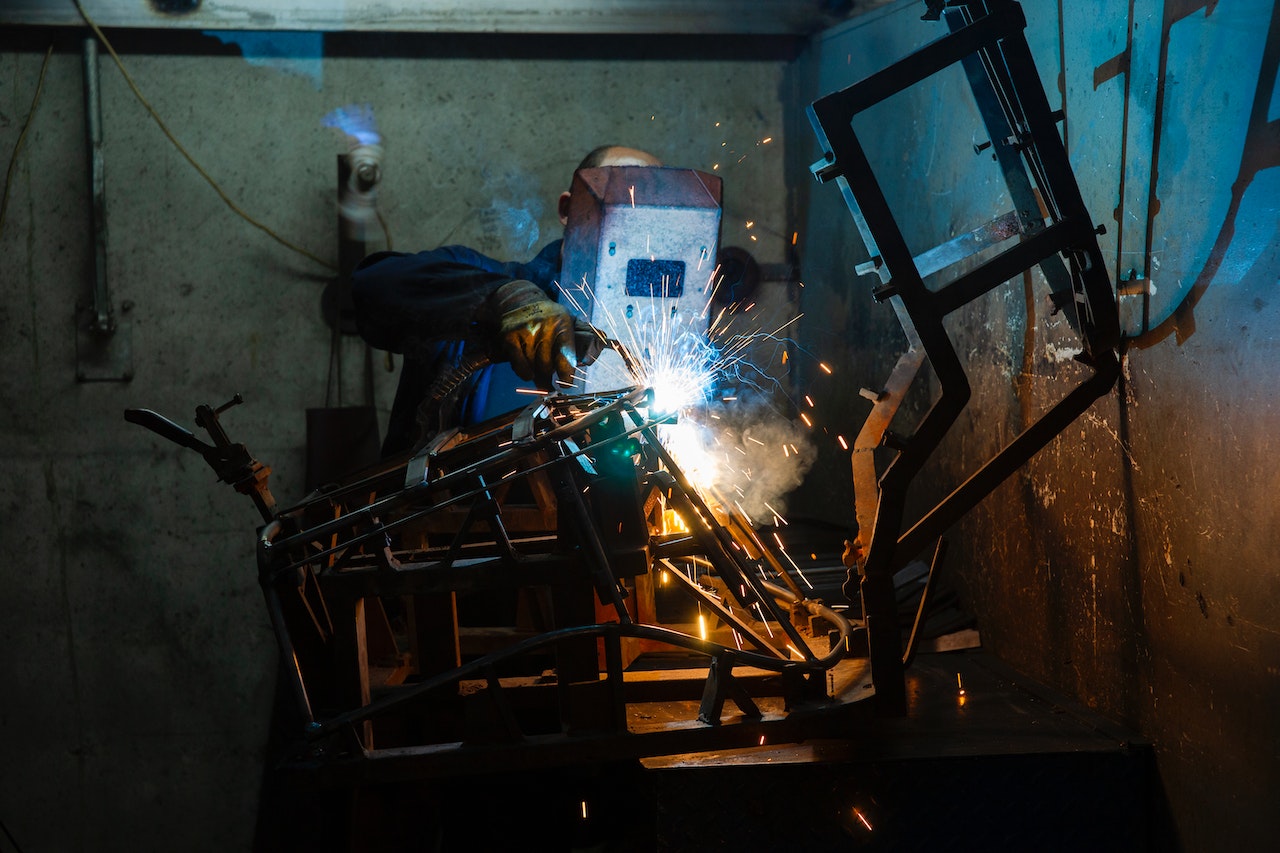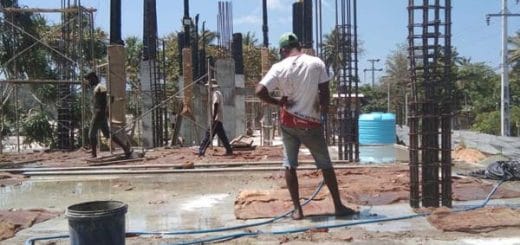All You Need to Know About Fillet Welding
Fillet welding is a fundamental process in the realm of welding, known for its versatile applications and strong joint formations. In this article, we’ll delve into the ins and outs of fillet welding, covering its definition, benefits, techniques, common applications, and much more.
We cover the almost all aspect connected with this subject and this article will provide you with a comprehensive overview of fillet welding.
Fillet welding is an indispensable technique utilized in various industries, from construction to manufacturing. It involves creating a triangular-shaped weld joint between two pieces of metal, usually at a 90-degree angle.
This method offers several advantages, including its ability to distribute stress evenly across the joint, resulting in a strong connection.
Advantages of Fillet Welding
One of the primary benefits of fillet welding is its efficiency in producing the effective connection. The process is relatively quick and requires minimal material, making it cost-effective.
Additionally, the welded joints are aesthetically pleasing, making them suitable for visible parts in structures or products.
Fillet welding also offers excellent fatigue resistance, making it suitable for structures that undergo dynamic loads.
Fillet welding offers several advantages over bolted connections in various applications:
- Structural Integrity: Fillet welds create a continuous and uniform connection along the joint, distributing the load more evenly. This enhances the structural integrity of the joint, making it better equipped to handle stresses and loads.
- Load Distribution: Welded fillet joints help in distributing loads over a larger area compared to concentrated load points in bolted connections. This results in reduced stress concentrations and minimizes the risk of fatigue failure.
- Aesthetics: Welded connections often have a cleaner and more aesthetically pleasing appearance compared to bolted connections, as they eliminate the need for visible fasteners. This can be particularly important in applications where visual appeal is a consideration.
- Space Efficiency: Fillet welds eliminate the need for additional hardware such as nuts and bolts, leading to more space-efficient connections. This can be crucial in scenarios where space is limited or when the overall design needs to be compact.
- Corrosion Resistance: Properly executed welds can offer better corrosion resistance compared to bolted connections. Bolts, especially when exposed to the elements, can be prone to corrosion over time. Welded joints provide a continuous protective barrier against environmental factors.
- Reduced Vibrations and Noise: Welded connections tend to offer better resistance to vibration-induced loosening, which can be a concern with bolted connections. This helps in reducing the potential for noise generation and maintaining the integrity of the joint over time.
- Sealing Properties: Welded joints can provide better sealing against environmental elements such as dust, water, and gases. This is particularly advantageous in applications where airtight or watertight seals are required.
- High Strength: Fillet welds, when executed correctly and by following proper welding procedures, can achieve high levels of joint strength. This is especially valuable in load-bearing structures and critical applications.
- Ease of Inspection: Welded joints can be visually inspected for quality and consistency, ensuring that proper welding procedures have been followed. This can provide a higher level of quality control compared to bolted connections.
- Longevity: A well-executed fillet weld can provide a long-lasting connection that remains secure over the lifespan of the structure. Bolted connections might require periodic maintenance due to the potential for loosening and corrosion.
While fillet welding offers these advantages, it’s essential to note that welding requires skilled labor and proper quality control to ensure its effectiveness. Improper welding techniques can lead to weakened joints, so it’s crucial to adhere to industry standards and guidelines when choosing between fillet welding and bolted connections.
Basic Equipment for Fillet Welding
The following equipment are used to carrying the welding.
- Welding machine
- Welding electrode
- Protective gear such as welding helmet, gloves, and safety glasses, as well as clamps to hold the pieces in position.
Types of Fillet Welds
Fillet welds come in several different types, each with its specific purpose and geometry. Some of the common types of fillet welds:
- Tee Fillet Weld: In this type of weld, one component is perpendicular to the other, forming a “T” shape. Tee fillet welds are commonly used to join two components at right angles, such as where a horizontal member meets a vertical one.
- Lap Fillet Weld: In a lap joint, one component overlaps the other, and the fillet weld is used to join them together. This type of weld is often used to connect plates or sheets of metal that overlap.
- Corner Fillet Weld: Corner joints are formed when two components meet at an angle other than 90 degrees. Corner fillet welds are applied at the intersection of these components to create a strong connection.
- Scarf Fillet Weld: This type of fillet weld is used to join two components that are beveled or chamfered at their edges. Scarf fillet welds are often employed in applications where a smooth transition is needed between the components.
- Chain Fillet Weld: A chain fillet weld is a series of intermittent fillet welds placed side by side along a joint. It is used when continuous welding is not practical, often due to the length of the joint.
- Staggered Fillet Weld: Similar to a chain fillet weld, staggered fillet welds are a series of intermittent fillet welds. However, in this case, the welds are alternated on opposite sides of the joint, creating a staggered pattern for enhanced strength.
- Intermittent Fillet Weld: In intermittent fillet welds, the welds are not continuous along the entire length of the joint. Instead, they are spaced out at intervals. This can be done to save time and welding material while maintaining adequate strength.
- Plug Fillet Weld: A plug weld is a circular weld that penetrates through a hole in one component to join it to another component underneath. It’s a type of fillet weld used in applications where access is limited, and a strong connection is needed.
- Slot Fillet Weld: In slot welds, a slot or groove is cut into one component, and the other component is welded into this slot. This type of weld is often used for joining parts with flanges or lips.
- Backing Fillet Weld: A backing fillet weld is used to provide additional support to the main fillet weld. It’s placed on the opposite side of the joint to prevent distortion and enhance the overall strength of the connection.
Each type of fillet weld has its advantages and is selected based on the specific requirements of the joint and the application. The choice of weld type depends on factors such as joint geometry, material thickness, load-bearing capacity, and design considerations.
Before starting the welding process, proper preparation is a must.
This involves cleaning the surfaces to be welded thoroughly to ensure a sound bond.
Joint design, including the angle and fit-up, also plays a significant role. Additionally, choosing the right materials is essential to achieve the desired strength and durability.
There are several techniques to master when it comes to fillet welding. Tack welding involves creating small, temporary welds to hold the pieces in place.
Running a bead is the process of depositing the filler material along the joint in a straight line. The weaving technique involves creating a zigzag pattern, distributing the heat and filler metal evenly.
The quality of a fillet weld depends on various factors. Welding current and voltage determine the heat input, affecting the fusion between the metals.
Travel speed also plays a role, with slower speeds allowing for better penetration. The electrode angle influences the shape and quality of the weld bead.
Fillet welding finds applications in numerous industries. In structural fabrication, it’s used to join beams, columns, and other components.
The automotive industry employs it for manufacturing frames and exhaust systems. Shipbuilding relies on fillet welding for constructing vessels, while the pipeline industry uses it to connect pipes securely.
Quality Control and Inspection
Ensuring the integrity of fillet welds involves rigorous inspection. Visual inspection of welds for surface irregularities, while non-destructive testing methods like ultrasonic testing and dye penetrant testing detect internal defects. X-ray examinations provide detailed insights into the weld’s structure.
Safety should be a top priority during fillet welding. Personal protective equipment like helmets, gloves, and safety glasses shield the welder from sparks and harmful radiation. Adequate ventilation prevents the accumulation of fumes, and fire prevention measures reduce the risk of accidents.
Welding doesn’t always go smoothly, and fillet welding is no exception. Incomplete penetration can lead to weak joints, while undercutting weakens the base metal near the weld. Spatter, the expulsion of molten metal, can mar the appearance of the weld. Identifying these issues and addressing them promptly is crucial for quality welds.
In conclusion, fillet welding is a versatile and vital process in various industries, contributing to the creation of robust structures and products. By understanding the techniques, equipment, and factors influencing fillet weld quality, aspiring welders can embark on a journey of creating strong and reliable joints. Whether you’re constructing buildings, manufacturing vehicles, or building pipelines, fillet welding knowledge is a valuable asset.




